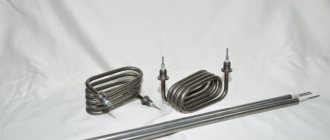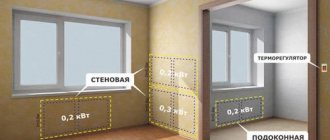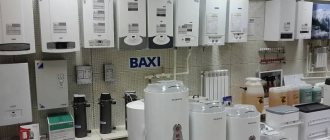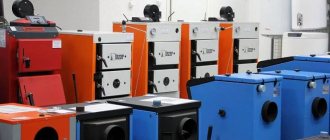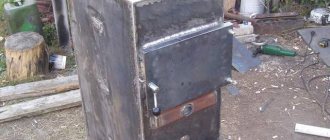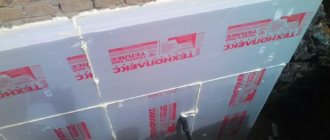In order to equip a room with water heating devices today, it is not necessary to use a stationary chimney. To do this, you can use a chimneyless gas boiler. Such equipment has an independent smoke removal system and small dimensions, which is a rather convenient factor for many consumers. The smoke removal system itself is somewhat reminiscent of an exhaust hood and this is their main charm. Let's discuss this topic in more detail. Similar boilers appeared quite recently and although they are very similar to classic boilers, some differ from others in the operation of their system, which is called coaxial with a closed chamber.
Operating principle and advantages
A boiler that does not have a chimney completely or has one, but is very simple, has a number of its own unique design features and a certain operating principle, which we will discuss later.
Since gas is used to operate such a heating unit, the main requirement is the presence of a cylinder connected to the device or the presence of an already installed gas line. Also, although the name suggests that such a boiler is chimneyless, it still has a chimney, but in comparison with other large, complex and massive systems it is very simple.
In order to make such a hearth even more useful and powerful, to heat a large house with it, you can connect it to heating radiators and thereby convert it into systems with a water circuit. Heating in this case will be carried out by circulating and heating cold water in the radiators of each room. In the same way, you can get hot water in the house.
A double-circuit gas flueless boiler consists of the following elements:
- Gas lines or systems;
- A heat exchanger through which heated water moves and circulates;
- Return heating circuit;
- Through the input element, cold water enters the system;
- An output element that is used to remove and use already hot water for various domestic needs and purposes.
Such systems are complemented by two circuits at once, each of which is not connected to each other. This allows you to use them separately and for different needs. This variation can be supplemented with coolant, unlike single-circuit ones, which, at most, can be used to simultaneously heat and produce hot water using a device such as a boiler, which is purchased separately.
The most economical and budget-friendly variations are those that have a boiler with indirect heating, due to which closed local recirculation is formed. Thus, you can equip your home not just with hot water, but also get it heated to a certain temperature by simply opening the tap. The disadvantages include the bulkiness of such systems, due to which they will not fit into small houses and apartments. At the same time, the price of products manufactured by well-known and trusted brands is not always the lowest and most affordable.
Before you buy a chimneyless boiler, we recommend that you familiarize yourself in more detail with all its positive qualities and operational capabilities:
- Double-circuit variations of the modern model are distinguished by their average, and in some cases, quite miniature overall dimensions. Due to this, such a unit easily fits even in the smallest and most standard kitchen or in a specially designated utility room;
- The functionality of such centers is very large and varied. This is not just a heating device, but also the ability to connect to a water jacket to heat a large area. If you have a boiler, you can get water for domestic purposes;
- They are economical. The owner of the house can use such boiler equipment himself, as needed, thereby reducing resource consumption;
- Since double-circuit variations have a simple list of components, unlike single-circuit boiler systems, installation can be done with your own hands and without the help of a specialist.
The disadvantages of this variation are that it is not capable of performing several actions at the same time. For example, when performing the heating function, you will not be able to receive hot water. Also, water heating does not occur immediately, but gradually. Moreover, the smaller the size of the tank for filling and storing water, the less you will be able to provide your home or apartment with hot water
When using such a boiler, it is important to remember that, for example, when using water in the kitchen, it may not be enough for someone who is currently washing in the bathroom
What features should you be prepared for when operating the boiler?
What to pay attention to
First of all, turbo boilers are dependent on electricity. When there is a power outage, it turns off automatically. On the one hand, this is fraught with cooling of the premises and lack of hot water supply. But on the other hand, this means that the gas valve shuts off the gas supply, and the blocking system does not allow the burner to ignite. So in places where the power supply is unstable and where frequent power failures occur, you will have to consider the issue of emergency power supply.
The second feature is the need for regular maintenance by service center specialists. This is especially true in regions where natural gas has a large amount of impurities. Not only the burner with the combustion chamber requires cleaning, but also the turbine.
The third point is that quite often chimneyless gas boilers with too short or, conversely, long chimneys can be blown out by gusts of wind. In most cases, this problem is solved by installing a deflector instead of a decorative grille.
Malfunctions of a chimneyless gas boiler
As for characteristic malfunctions, gas boilers without a chimney have the same characteristic malfunctions as conventional chimney boilers:
- Malfunctions of the control board - most often the cause of the malfunction is a manufacturing defect, voltage surges or water leakage from the heat exchanger (for many wall-mounted models, the control board is located at the bottom, under the main equipment);
- Malfunctions of electrical equipment - temperature, pressure, water flow sensors, centrifugal pump and turbine usually fail after a long period of operation;
- Heat exchanger leakage is especially common in double-circuit gas boilers without a chimney after 7-10 years of operation. In places where copper plates or pipes are soldered, holes usually form through which water or coolant leaks;
- A coaxial chimney often simply requires cleaning from dust and carbon deposits. But if this is not done regularly, during boiler maintenance, the likelihood that debris will get into the combustion chamber and the burner nozzles will become clogged increases significantly.
But despite this, chimneyless gas heating boilers are currently one of the most reliable and safe heating devices. In a closed combustion chamber, when the turbine is stopped during wind blowing, the gas supply instantly stops. Re-ignition of the burner occurs only when the automation carries out diagnostics of all equipment and allows the gas supply to start again.
Manufacturers and brands
Equipment of this class is produced by all well-known European companies, as well as domestic enterprises. If we consider its cost in relation to wall and floor options, then it is distributed in the same way as for boilers with an open combustion chamber. Wall-mounted options are cheaper, while floor-mounted ones have the highest price.
If we compare between local and foreign models, then here too there is no particular difference between boilers with an open and closed combustion chamber. Imported samples still have the highest prices, and products from domestic manufacturers are almost 50% cheaper.
If we consider boiler models from one manufacturer, for example, the very popular Italian company Baxi. Then its gas flueless floor-standing units have a price of around 2000, and wall-mounted models - about 1000 euros. The cost of wall-mounted boilers with an open combustion chamber under the brand name of this company is about 700-800 euros.
But, despite the higher price, chimneyless boilers are in great demand, especially when equipping apartment heating systems in multi-storey buildings.
What requirements must be taken into account for installing chimneyless boilers?
As with other gas equipment, flueless boilers must comply with strict government regulations regarding the safety of installation and operation. True, it is worth noting that the installation of such equipment is much safer than conventional chimney models with an open combustion chamber. Otherwise, the requirements for these devices are standard - they cannot be installed above stoves, the established distance must be maintained, and there must be a working alarm system in the room.
Devices are selected according to power depending on the area of the heated room and the requirements for the volume and temperature of heated water. As for the coaxial chimney, it can be installed horizontally or vertically. When installed horizontally, it is made at a slope of 2-3 degrees towards the wall, so that the condensate formed between the circuits does not enter the combustion chamber.
A vertical chimney is installed when it is not possible to install a horizontal chimney, for example, when the distance between neighboring buildings is less than 1.5 meters or the chimney is located near a window. Under such circumstances, the horizontal gas exhaust pattern is unsafe and a vertical chimney pattern is used.
The height of the vertical coaxial chimney must be such that the total length of the chimney is no more than 5 meters. Another condition for installing a vertical chimney is that the design should have no more than 2 bends.
Theoretically, a coaxial chimney can be made independently, there is nothing complicated about it. But on the other hand, professionals advise using branded components for the boiler and chimney. The fact is that manufacturers develop chimney systems that are universal for different brands of boilers, but of their own production. However, for other brands these components may not be suitable both in size and in the method of fastening.
Branded components use stainless steel for the internal pipeline, and high-quality plastic or stainless steel for the external pipeline.
Chimneys and material options for their installation
Current heating equipment powered by gas is characterized by a fairly high efficiency index and low temperatures of combustion products, which implies increased requirements for the materials from which chimneys are constructed. In the construction market, there is a gradual replacement of brick, steel, asbestos pipes, and galvanization with more modern ones. Increasingly, special protective sleeves are used, as well as stainless steel and Hungarian furanflex. Let's take a closer look at the parameters of each of these materials.
Galvanized pipes
Steel pipes are quickly exposed to corrosion, which makes the operation of a galvanized chimney quite short (about 3 years). The use of a specially designed protective coating can extend the service life up to 5 years.
Asbestos cement pipes
This material was widely used in organizing the removal of combustion products, despite the maximum temperature of 300 degrees Celsius. This option has an acceptable cost, but has a number of nuances that would have to be dealt with (for example, installing a chimney on a gas boiler is quite difficult in the vertical plane, insufficient tightness of the joints, the likelihood of rupture or splitting of pipes when they overheat, as well as the ability of asbestos cement to absorb moisture and condensate).
Brick chimney
Brick is far from the best material for creating a chimney, since condensation quickly destroys the integrity of this material. Quite often, in houses equipped with a brick chimney, the ceilings and walls are “decorated” with damp spots, which are formed due to the absorption of moisture and condensation by the brick.
Protective sleeve
The smoke exhaust device, which has equal perimeters of the ventilation duct and the protective sleeve, is a composite multilayer shell. The main function of this design is to protect smoke channels from the adverse effects of thermal gas flows. Special hoses can be used to seal ventilation channels; their use can minimize the effect of combustion products on the chimney, as well as improve draft and increase the operating time of the entire structure.
Furanflex
It is a new option that is used for chimney installations. It is made from reinforced plastic reinforced with special fibers. A distinctive feature of this material is its resistance to interaction with the acidic environment of condensate, low thermal conductivity and efficiency when operating at temperatures less than 200 degrees Celsius.
Stainless steel
This material is characterized by high levels of tightness and fire safety, quickly overcoming the threshold of condensation. Thanks to its round cross-section and smooth surface, stainless steel promotes maximum traction
When purchasing pipes of this type, you should pay attention to their marking data, since they can significantly affect the quality of welded joints, as well as options for connecting disparate elements into a single structure
The influence of pipe material on the occurrence of excess moisture
You can insulate a ventilation chimney pipe using different materials and methods, but you must take into account the quality of the material from which this pipe was made, because it will directly affect the process of moisture formation.
When the gas boiler is turned on, a brick chimney takes a long time to heat up, so a large amount of moisture appears in it. A steel chimney can also form a certain amount of moisture inside, but this problem is quickly solved by installing two nested cylinders (the diameter of such pipes must be different) with insulation between them. This technology is called “sandwich”.
Ceramic pipes are convenient because they warm up quickly and therefore do not form condensate stagnation, especially if they are installed correctly and properly insulated. If you decide to make a pipe for a gas boiler from the polymer material furanflex, there will be no problems with the formation of excess moisture.
Asbestos-cement pipes are already gradually becoming obsolete, because they are harmful due to the formation of asbestos dust and poor heating. The last factor negatively affects moisture formation.
Almost any chimney pipe with insufficient insulation and incorrect, leaky installation can contribute to the formation of destructive moisture. Timely insulation of the chimney with mineral wool, brick chips, slag and other suitable materials will help solve the problem.
I like1I don't like
Parapet heating systems
One of the types of gas chimney boilers is parapet. The design resembles the design of condensing equipment. The main difference from the latter is the presence of a closed combustion chamber. During operation, air, which is inevitably consumed during combustion, enters the firebox not from the room itself, but from the street, therefore, overheating does not occur and the oxygen concentration does not decrease. As a result of this method of operation, the efficiency, environmental friendliness and efficiency of equipment increase
It is important to remember that some types of equipment, in addition to the traditional heat exchanger, have a convection casing in their design, which allows you to heat the room, consuming less gas, that is, with greater efficiency. There are mounted types of parapet equipment, which are mostly energy-dependent and also require additional power from electrical networks
At the same time, floor-standing units are completely energy independent.
Operating principle of chimneyless boilers
Fundamentally, this group of heating devices is no different from conventional boilers with an open burner. In the heat exchanger above the gas burner, the coolant for the heating system and water for hot water supply are heated. The coolant moves through the system under pressure created by a circulation pump. The burner ignition is controlled by a control system that responds to changes in data with a temperature and water flow sensor. The difference lies in how atmospheric air is supplied to the combustion chamber and how exhaust gases are removed.
The gas burner is located in a closed circuit; when a signal is sent from the control board, the electric turbine begins to operate before igniting the piezoelectric element. Its design has two independent chambers with arranged impellers. One wheel with blades sucks air into the combustion chamber circuit from the channel between the pipes of the coaxial chimney. The second wheel creates a flow through an internal pipeline that removes air to the outside. 2-4 seconds after the turbine starts operating, the gas supply to the burner is turned on and the flame is ignited.
During operation, combustion products are removed through an internal pipeline. At the same time, given that the temperature of the exhaust gases is high, the air supplied to the combustion chamber is heated, which has a positive effect on the operation of the boiler.
The design of the coaxial channel is as follows: outside the building, the pipe extends 30-50 cm, depending on the design of the chimney. The outer circuit is located at a distance of 15-25 cm from the plane of the wall, and the pipe through which gases are discharged is extended 10-15 cm further than the outer circuit. So during operation, both flows do not mix.
How to make a chimney for a flueless boiler
The advantages and disadvantages of chimneyless boilers have been discussed more than once in various construction forums. In Europe, the units enjoy a well-deserved reputation as economical and reliable equipment with low installation requirements. Under domestic operating conditions, boilers' efficiency and productivity are somewhat reduced.
Several aspects can be highlighted as advantages:
- There is no need to coordinate with the gas service when installing a turbo boiler, provided that licensed and certified equipment is purchased.
- It is allowed to install the boiler in rooms with limited space, in apartment buildings and private houses. There is no need for forced ventilation of the room.
- Performance – chimneyless units use the temperature of heated flue gases to generate additional thermal energy, which increases the efficiency and efficiency of the devices.
What malfunctions often occur with chimneyless boilers?
Most malfunctions occur due to improper operation or installation of equipment. The specialist will try to find out the reasons why the chimneyless boiler goes out and eliminate them. There are several factors leading to this:
- Poor traction - non-compliance with the requirements for installing a coaxial pipe: exceeding the permissible vertical and horizontal sections leads to shutdown of the equipment.
- Voltage failures - in most cases, sensitive automation is installed in chimneyless units. If there is a voltage failure, the processor gives a signal to shut down.
- Malfunctions in the operation of automation - the design provides a large number of monitoring sensors: draft, heating of hot water and coolant, etc. Failure of any sensor leads to a shutdown.
If you follow the rules for installing chimneyless wall-mounted heating boilers and carry out regular maintenance, the devices will operate without complaints or difficulties throughout their entire service life.
How to deal with blowing out of a chimneyless turbo boiler?
One of the main problems that owners of chimneyless heating equipment face is shutdown due to poor draft or blowing out of the boiler. The danger of chimney backdraft for a boiler with a closed combustion chamber lies in the likelihood of carbon dioxide entering the room, as well as failure of individual components.
There are several ways to troubleshoot the problem:
- Improve the draft in the boiler by installing a deflector that increases the draft by approximately 1.5 times.
- Install wind protection - a block mounted on the head of the pipe reliably protects against wind.
- If the situation is not corrected, the coaxial chimney is redone, taking into account the technical requirements for the location of the chimney, when installing a turbocharged boiler with a closed combustion chamber in a private house.
In Europe, it is mandatory to install a gas detector when operating any gas equipment. In our country, this is a desirable measure that has already saved dozens of lives.
Which boiler is better - chimney or flueless, expert opinion
When answering this question, it should be taken into account that condensing / chimneyless boilers were created for operating conditions in low-temperature coolant heating mode. The 95% efficiency declared by the manufacturer is only possible if the return temperature is no more than 40°C. In the harsh Russian winter, it is quite difficult to fulfill this condition.
Installing a boiler with a closed combustion chamber in a regular chimney when replacing old equipment with new equipment is prohibited. You will have to redo the smoke exhaust system, which is quite expensive. Chimneyless units are optimally suited for well-insulated buildings located in temperate climates.
Methods to combat the blowing out of a flueless turbocharged boiler
To quickly and permanently get rid of the problem of blowing out the flame in a turbo boiler, you must first install a deflector that cools the air and increases draft. If you are in a windy area, be sure to install a windbreak. This is a special block that is mounted on the very top, that is, the head of the outgoing pipe.
We recommend reading: The reason why a gas boiler is blown out by the wind
If none of the methods helps solve the problem, you should remake the chimney pipe in accordance with all the requirements for this type of structure. These standards are established officially and are publicly available information.
Features of the design, operation and installation of floor-standing chimneyless gas boilers
If it is impossible to install a classic vertical chimney, flueless gas boilers are used for heating. For such heating equipment, a separate ventilated room for natural draft is not equipped.
Despite the name “flueless”, such boilers do have a chimney. Its role is played by a compact coaxial pipe, which provides draft and removal of smoke masses from the combustion chamber.
External outlet of coaxial chimney
Design and principle of operation of chimneyless boiler equipment.
Chimneyless boilers, like classic gas boilers, operate in heating mode - single-circuit, and also as water heaters (DHW) - double-circuit.
A distinctive feature of the design is a closed combustion chamber. The burner, through which the gas heats the water in the system, is located in a sealed chamber. Thus, carbon monoxide, soot and smoke from fuel combustion do not penetrate into the room, and the boiler’s operating efficiency increases.
Oxygen-saturated combustion air enters the closed chamber through the external chimney block. The air heated by the burner element heats the copper circuit through which the coolant flows. Then the “exhaust” air, together with the products of fuel combustion, exits through the internal block of the coaxial pipe.
Scheme of operation of a floor-standing coaxial boiler
The coaxial chimney is simple to implement. These are two coaxial pipes of different diameters, fastened together. In this way, the heated gas waste is cooled by the air entering the chamber, making the boiler fireproof and environmentally friendly for the residents of the house. By cooling the combustion products, the air enters the combustion chamber already heated, which saves energy resources.
To prevent insufficient draft, high-power gas boilers are equipped with deflectors that increase the air flow by one and a half times. If there is a possibility of wind blowing, a special wind protection block is installed at the pipe outlet.
Features of installation of gas boilers with a coaxial chimney.
Floor-standing chimneyless boilers for autonomous heating systems are installed in small buildings and in multi-apartment buildings or industrial premises.
Chimneyless gas boilers are installed on a special stand. If the boiler is controlled by an electronic board, it is connected to electricity according to the rules for installing electric and gas equipment by specialists.
They are included in the heating system and gas mains in the same way as chimney gas boilers. The difference is the installation of a coaxial chimney.
Installation diagram of a horizontal coaxial chimney
Requirements for installing a coaxial pipe as a chimney:
- The chimney outlet to the street runs horizontally through the wall. The length of this pipe section is no more than 1 meter.
- The chimney is horizontal, but if horizontal exhaust is not possible, a vertical chimney is used. The length of the vertical part of such a chimney is about 3 meters.
- The outer part of the pipe is located no lower than 2 meters from the ground.
- The distance from the pipe to window or door openings is at least half a meter.
- Do not place the pipe outlet under a window.
- To prevent the accumulation of condensation liquid, it is installed at an angle of 3-5 degrees.
- Observe the diameters of the coaxial chimney pipes and their ratio for fire safety.
- The hole drilled in the wall for the pipe is lined with insulation made of non-flammable material.
Compliance with these requirements will ensure the boiler operates safely and efficiently.
Chimneyless boilers - their pros and cons of operation.
The advantage of floor heaters equipped with a coaxial pipe is installation in a living room. To fit the boilers into the interior, the finishing of the walls and the junction of the chimney with the wall is selected.
More details about coaxial chimneys and their use for gas boilers can be found in the video below.
Coaxial boiler in the interior of the apartment
Besides this, other advantages:
- simplicity and low cost of installation;
- there is no need to install supply and exhaust ventilation;
- high power of units of such a design that they heat large areas;
- some gas models are equipped with convection holes, which makes it possible to heat a room without a radiator;
- long service life.
The disadvantages of coaxial boilers are the smoke exhaust system. The length of the smoke exhaust pipe is no more than 5 meters. During frosts, chimneyless boilers operate at high power, which causes more condensation to form in the coaxial pipe, which freezes and blocks the air supply and smoke removal. Blowing out of the chimney occurs if it is not equipped with a wind protection.
The principle of operation of a boiler without a chimney
This type of gas boiler works on the principle of removing smoke through smoke vents located in the wall (without any openings or openings), and not through a smoke duct leading to the roof. This type of gas exchange is called “pipe in pipe”. The outer pipe contains an inner one, but of a smaller diameter. Through it, smoke waste is removed, as well as water, carbon dioxide or carbon monoxide - combustion products.
Air from the street enters through an external pipe with a large diameter. Moving through the pipe, it is warmed up with the help of combustion products, filling the boiler chamber. There, the air mixes with fuel, which has the state of aggregation as a gas. Due to the high air temperature, the fuel burns out completely, creating significant savings.
The system is equipped with special fans that control the flow and draft of air, while in classic chimney boilers such measures are carried out independently.
What we pay attention to
Heating devices with a closed combustion chamber include a coaxial chimney for a gas boiler.
It is designed to ensure smooth operation of the device. And serious requirements are placed on it, because combustion products are released through it, which are very harmful to human health. Therefore, it is recommended to install it through a wall in which there are no window or ventilation openings.
In all other parameters, the criteria for choosing a gas flueless boiler do not differ from others
When purchasing it, you should also pay attention to:
- power
- compactness
- design
- ignition options
The brand of the manufacturer is also an important factor, and since each of them has a wide range of products, it is worth evaluating several different samples to decide which one is best suited for the room.
Flueless boilers are divided into:
Let's start our consideration with floor-standing boilers from the Slovak manufacturer Proterm. They are non-volatile and have an efficiency of 90%, are reliably protected from overheating and are supplied assembled. Floor-standing boilers have high power ratings and can be used for heating large rooms, and also have other remarkable characteristics:
- reliability
- ease of use
- relatively low price
- possibility of changing fuel
The next noteworthy models are gas boilers with a coaxial chimney from a Korean manufacturer; today they are leaders in the sales market and not only because they have a low cost, but also due to a fairly large list of high performance indicators.
When choosing these devices, even the brand is not so important. It can be:
All of them are well adapted for use in the Russian climate and have high quality indicators, a large number of safety sensors and are very easy to operate.
German chimneyless boilers are undeniable in their reliability and quality. Not only are they designed for a long service life, but they also have a lot of advantages, not the least of which is environmental friendliness.
The brand plays a significant role when choosing, but you should not lose sight of other parameters:
They are also important and must be taken into account when purchasing.
Which chimneyless boiler is better to choose for your home?
When choosing one of the types of heating devices under consideration, it is worth considering that chimneyless devices are created to operate a coolant that has a fairly low temperature - about forty degrees Celsius. Thus, normal operation and 95 percent efficiency (efficiency factor) will be ensured if the water temperature does not rise above the specified level.
This is interesting! It has been noticed that with the correct selection of a boiler subtype without a chimney and its proper installation, the efficiency increases and even becomes more than one hundred percent (108-109%).
Russian turbocharged boilers
Turbocharged boilers of Russian domestic production are not so widely represented on the heating equipment market. “Conord”, “ZhMZ”, “Neva” and “Rostovgazapparat” - these devices have already proven themselves, offering lines with different models.
Manufacturers producing boilers of these brands have adapted their devices specifically to Russian realities, taking into account all possible nuances. Domestic coaxial heating units have a great undeniable advantage over their foreign counterparts - they cost on average thirty to fifty percent less. Thus, a device from an Italian company can cost up to two thousand euros, while a Russian one will cost a maximum of 1,100 euros.
Foreign turbocharged boilers
High-quality American and European automation, which is equipped with these foreign units (Vaillant, Ariston, Viessmann, Baxi, Buderus, Ferroli), allows you to trust these brands, because they have already been tested by a large number of users. Korean-made Navien and Daewoo boilers also stand out among other, lesser-known brands.
The Slovak brand Proterm is widely represented on the Russian market. Boilers of this brand require an additional connection to electricity, but are conveniently installed, without requiring assembly or additional preparation. Korean (Olympia) and “Rinnai” are equipped with high-quality sensors that allow full control of the current operation of the device.
Ukrainian flueless boilers
Turbocharged boilers of foreign production are represented on the relevant market by such Ukrainian companies as, for example, Danko and Euroformat. Experts note the units of these two brands, which stand out among others in terms of their long useful life.
This is interesting! Most Ukrainian-made boilers, produced under the Euroformat and Danko trademarks, have in their design parts made in the USA and some European countries. Thus, the Danko device contains inside a micro-flare stainless steel burner and a piezoelectric element for its convenient ignition.
SNiP standards
The manufacture and installation of any chimney structures must comply with all requirements of SNiP 2.04.05-91 and DBN V.2.5-20-2001. Such adherence to standards guarantees the safe operation of the heating system. Violation of the conditions listed in the documents can lead to problematic situations, the solution of which will require the participation of the gas industry.
Abstracts from the main regulatory documents:
- The structure of the condensate collector should solve the problem of moisture accumulation on the walls of the chimney;
- Good traction is a must;
- The head of the chimney must be free and do not allow the presence of deflectors or fungi on it that inhibit the removal of combustion products;
- A careful fit of all structural elements at their connection points is mandatory;
- Tight sealing at joints and all kinds of connections is required.
Chimney boiler
This is a traditional type of heating device. The successful operation of any device operating on both gaseous and solid or liquid fuels depends on whether the chimney is properly constructed. If the chimney is not installed correctly, this can lead to the appearance of extremely toxic gas - carbon monoxide - in the heated room.
Owners of private houses are required to know how the chimney is designed so that both the smoke removal system and the boiler are properly operated.
It is also important to know that a chimney can be:
- Brick.
- Ceramic.
- Coaxial.
- Sandwich made of stainless steel.
The brick chimney is the oldest type of chimney system. Nowadays, the classic brick chimney is no longer so popular, due to such a disadvantage as the tendency to become overgrown with soot.
The second type of chimney has gradually become more popular than the classic brick chimney system, but these days the popularity of the ceramic design is low.
Coaxial chimney systems are more popular. A chimney of this type differs significantly from other types of chimney systems. The difference is that such a chimney is vented outside not through the roof, but through the wall of the house. Such a chimney is very popular, especially if the boiler runs on gas.
Nowadays, the most popular type of chimney system is a sandwich-type chimney made of stainless steel. Thanks to the smooth internal surface, combustion products are easily removed from the building. The mirrored outer surface makes the chimney attractive. And in order for the chimney to have good thermal insulation, a special insulation is used - mineral wool.
Chimney boilers general information
When choosing chimney boilers powered by natural gas, you need to know what types of this equipment are on sale today. Popular types are:
- Parapet boilers;
- Mounted;
- Floor-standing.
When choosing heating equipment, you should pay special attention to the following indicators and parameters:
- Possibility of additional power supply from electricity in case of emergency shutdown;
- The presence or absence of a circuit and/or built-in boiler;
- Performance.
Despite the fact that the equipment produced in our country does not have a wide range of capabilities and the functionality is much more modest than that of analogues from Western countries and Japan, the reliability and durability of all elements allow it to be used for heating rooms of various sizes without loss in performance
It is important that all gas boilers are completely safe, since they undergo preliminary quality control before entering the market
Boiler with or without chimney. Which is better?
A chimneyless boiler is a fairly convenient and economical option if the consumer’s choice depends on the installation area. Its productivity is much greater than that of chimney boilers, as well as a convenient combustion chamber system, which also indicates the benefits of a chimneyless boiler for the consumer.
The disadvantages of such a boiler may be that its system is dependent on energy consumption, and also forces you to spend a lot of effort on its maintenance.
A chimneyless boiler will be the best option in typical houses when the wall allows the installation of a coaxial pipe. Such a pipe allows you to have an independent smoke removal system, and also does not worry about the safety of the room and the consumer located in it, unlike chimney gas boilers.
Basic requirements for chimney systems for gas boilers
When installing chimney ducts, to ensure their efficient operation and fire safety, the requirements specified in the regulatory documentation SNiP 2.04.05-91 and DBN V.2.5-20-2001 must be strictly followed. Their main provisions are the following points:
- The chimney cross-section (pipe diameter) should not be less than the boiler outlet pipe.
- The main pipe should be positioned vertically without inclined sections (let's say a slope of no more than 30 degrees), and there should be no curvatures or narrowed sections in its design.
- The maximum number of turns in the branch main is no more than three with the length of side branches up to 1 meter.
- The permissible distance between the walls of the chimney and non-combustible surfaces is at least 5 cm; if it passes through combustible walls and the roof, the permissible distance is more than 25 cm.
- The material used to make the chimney duct must be resistant to high temperatures and have a structure that prevents the passage of gases.
- All connections must be sealed, the insulation must not allow moisture and gases to pass through.
- Where the pipe duct passes through the roof, the structure must be solid and without joints.
Rice. 3 Boiler piping diagram
- At the bottom of the pipe there is usually an element for collecting condensate. The material used to make it must be resistant to moisture and gas combustion products.
- In places where turns are provided, inspection hatches must be located to clean the chimney from contaminants and condensate.
- The length of the chimney duct must provide good draft, the height of its outer part must be at least 50 cm above the roof ridge.
- When installing a smoke exhaust channel, it is necessary to have a protective canopy in its upper part to prevent the ingress of dirt and precipitation.
What is needed to install a gas boiler
The first stage of installation is to determine whether the room meets the minimum standards for the installation of boiler equipment.
There are several restrictions:
By type of room - installation is allowed exclusively in non-residential premises, fenced off from the rest of the room and corridor by a door. According to SNiP 2.04.08-87 (cancelled), installation in the bathroom and plumbing units was prohibited, but in regulatory documents under the number SP 62.13330 (SNiP 42-01-2002), this instruction is canceled.
Depending on the area and - as a rule, obtaining permission to install a heating boiler with an open combustion chamber is more problematic. This is due to the peculiarities of the operation of boiler equipment that burns indoor air. The standard is that the area should be at least 8 m², there must be supply and exhaust ventilation and a window with a window. To install a turbocharged boiler, it is enough that the total volume of the room is not less than 9 m³. It is allowed to cover the turbo boiler with a decorative furniture facade.
If the premises meet the requirements specified in the building codes, they begin to draw up design and other documentation.
What permissions are needed
Permission to use a gas boiler must be obtained from the regulatory organization operating in the given region. Usually this is Gorgaz or Oblgaz. To complete all the necessary documents, you will need to go through several stages of registration:
Specifications for connection to the gas main - the expansion will indicate that the technical conditions of the building and the parameters of the gas pipeline allow the connection of boiler equipment. To produce the specifications it will take from several weeks to a month. The document must indicate the estimated volume of gas consumed. The issuance of technical specifications is, in fact, permission to develop and manufacture a project.
The gasification project can be carried out by any specialized institution that has a license to carry out the work. In order not to encounter problems in the future, it is better for a specialist from Gore or Regional Gas to handle the manufacturing. Documentation is prepared within a period of a week to several months, depending on the specialist’s workload.
Permission to install a gas boiler is issued after approval of the documentation in Gorgaz. The following documents are submitted to the supervisory authority:
- Rostechnadzor permit and other technical documentation for the installed boiler.
Gas supply project and building plan.
Coordination is carried out within up to 3 months. If the organization issuing the permit considers that the technical specifications or design were not completed correctly, documentation is returned to the consumer with a detailed description of the necessary adjustments and changes.
The issuance of the result of approvals is a permit to install a gas boiler house in accordance with the existing project.
Is it possible to install it yourself?
In fact, the joint venture stipulates that installation work must be performed by a licensed and certified specialist. Few people know, but this standard applies exclusively to work on connecting to the gas main. You can connect the boiler yourself, provided you have a technical education.
When deciding to install a boiler yourself or involve specialists, several nuances are taken into account:
When installing a condensing type boiler, you will need to connect the unit to the electrical network and connect the condensate removal system without disruption.
Perform a number of approvals during installation. Additional approval of the chimney will be required when installing a gas heating boiler. The inspection is carried out by a representative of the gas industry “stove man”. During operation, such an audit will be carried out every year, before the heating season.
There is no guarantee for self-installed gas equipment. Only when the connection is made by a representative of the company selling the boiler, a stamp is placed in the document indicating the start of service.
After installation, a representative of the gas industry must check the operation of the boiler and fill out commissioning documents.
The best known manufacturers and models: characteristics and prices
Boilers from foreign manufacturers are considered more reliable and efficient. However, the quality of Russian-made boiler units is constantly improving, and prices remain just as affordable.
Floor-standing
Protherm Wolf 16 KSO
Floor-standing, non-volatile gas boiler with a capacity of 16 kW. Considering the low cost, this is one of the best energy-independent gas boilers for heating a private home. It features one of the highest efficiency - 92.5% with an optimal gas consumption of 1.9 cubic meters for 16 kW models. m/hour. It has a traction stabilizer, is easy to install and control (standard mechanical controls).
The owners note the almost silent operation; due to the practice of installing boilers, no serious malfunctions were observed.
Protherm has long been known in the Russian market for the reliability of its boiler units. We remind you that the maximum permissible pressure in the water circuit is 1 bar. This means that the boiler can only be used in systems with natural circulation and an open expansion tank.
Protherm Bear 20 TLO
Another reliable model from the Slovak company Protherm with a power of 18 kW. It has a lower efficiency of 90% at a gas flow rate of 2.14 m3/hour, and can also operate on liquefied gas. It features a high-quality cast iron heat exchanger with all its advantages, excellent for low-temperature heating modes. In practice, it is capable of heating houses with an area of up to 210-220 m2. During the installation practice, no problems were observed either with the design or with the automation. The only drawbacks are the considerable weight of 90 kg and the high price.
Baxi SLIM EF 1.22
A powerful Italian floor-standing boiler with a capacity of 22 kW with a cast iron heat exchanger, designed for heating a house with an area of up to 230-240 m2. It has lower efficiency indicators (88% efficiency), but is equipped with excellent automation that ensures high safety (gas control, overheating protection, there is a safety valve). Bonuses include an aesthetic appearance and a more reasonable price for powerful cast-iron boilers.
Beretta Autonom 18
Another well-known Italian non-volatile boiler with a capacity of 18 kW in Europe. It has a cast iron heat exchanger, its design is not much different from the Baxi SLIM EF. The boiler design still focuses on safety and quieter operation compared to previous models (the burners ignite evenly and smoothly). The model has a low gas consumption for a power of 18 kW - 1.94 m3/hour with an efficiency of as much as 93%.
A known problem is that the thermocouple fails after 8-12 years of use, so it is recommended to always have a spare part. Also, the boiler is demanding in terms of maintenance and chimney design (otherwise, in strong winds, blowouts may occur). However, with proper arrangement and maintenance, it works stably; there are examples of uninterrupted operation since 2006-2008.
Siberia 11
An excellent and inexpensive domestic option for small private houses with an area of up to 120 m2. The boiler takes pride of place in the ratings of non-volatile boilers primarily due to its efficiency (gas consumption - 1.18 m3/hour) and efficiency of 90%. It has the simplest and therefore reliable design. The models are equipped with the well-known and understandable Evrosit automation, used on most domestic boilers.
Review of Siberia gas boilers One of the most reliable among domestic boilers
Parapet (conditionally wall)
ATON Compact 12.5E
Parapet non-volatile gas boiler with a power of 12.5 kW with optimal efficiency (90% efficiency) and low gas consumption (1.39 cubic m/hour). It is distinguished by reliability and durability, quiet operation and extremely affordable cost. In practice, the boiler is demanding in terms of operating conditions and requires regular, preferably annual, cleaning of the chimney.
Average price: 17,000 rubles.
Lemax Patriot-16
A domestic boiler unit with a capacity of 16 kW, characterized by extremely economical natural gas consumption for such power - 0.95 cubic meters. m/hour, but with a slightly lower efficiency of 87%. The boiler has a simple and reliable design; with proper installation and maintenance, it does not require attention for at least several years. Due to its relatively quiet operation it is suitable for installation in the kitchen.
Boiler design without electricity
The gas boiler, independent of electricity, has:
- 2 gas burners – pilot and main;
- Combustion chamber - in such devices it is open for better traction;
- Automation;
- Boiler safety system - temperature sensor, backdraft valve (it is needed to regulate the operation of the chimney);
- Heat exchanger.
The system of a non-volatile gas boiler must have an open expansion tank, since when the coolant heats up, the liquid expands. And this is what promotes coolant circulation. But during expansion, excess is formed, which enters this tank.
Ignition in such gas boilers occurs using a piezoelectric element, which operates when a button is pressed. With its help, the pilot burner is ignited, and from it the main gas burner is ignited, thanks to which the heat exchanger is heated and the desired temperature of the liquid is maintained.
After some time, the gas does not flow and the burner goes out, after the heat exchanger has cooled down the process repeats.
